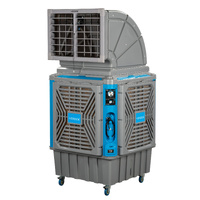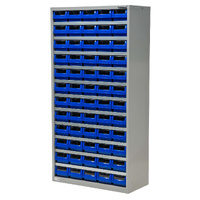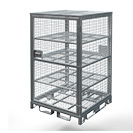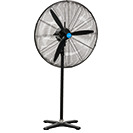The Functional and Aesthetic Benefits of Floor Mats
Date Posted:23 August 2024
Floor mats are indispensable tools that play a vital role in enhancing safety, comfort, and cleanliness in various environments. Through their functionality, durability, and versatility, floor mats contribute to preventing slips
Floor mats are not just simple accessories; they are essential components of safety and cleanliness in various environments, from homes and offices to commercial establishments and industrial facilities. These protective coverings serve multiple purposes, including preventing slips and falls, reducing fatigue, and maintaining cleanliness. In this article, we delve into the functionality, benefits, and diverse applications of floor mats, highlighting their importance in promoting safety and hygiene.
Functionality and Design
Floor mats are designed to provide a protective covering for floors, offering a durable and slip-resistant surface for walking or standing. They are typically made from materials such as rubber, vinyl, carpet, or specialized anti-fatigue materials, depending on the intended use and environment. Floor mats come in various sizes, shapes, and designs, including entrance mats, anti-fatigue mats, kitchen mats, and industrial mats, each tailored to specific applications and requirements.
Preventing Slips and Falls
One of the primary functions of floor mats is to enhance safety by preventing slips and falls in high-traffic areas or areas prone to moisture or spills. Entrance mats, for example, are placed at building entrances to trap dirt, moisture, and debris from shoes, reducing the risk of slips and falls caused by wet or slippery floors. Similarly, anti-slip mats are used in kitchens, bathrooms, and other areas where water or grease may be present, providing a secure footing for users and minimizing accidents.
Reducing Fatigue and Discomfort
Floor mats also play a crucial role in reducing fatigue and discomfort for individuals who stand for extended periods, such as workers in industrial settings, retail environments, or kitchen spaces. Anti-fatigue mats feature cushioned surfaces that provide support and relieve pressure on the feet, legs, and lower back, allowing users to stand more comfortably for longer periods. This not only improves worker morale and productivity but also helps prevent musculoskeletal disorders and injuries associated with prolonged standing.
Maintaining Cleanliness and Hygiene
Floor mats contribute to maintaining cleanliness and hygiene in various environments by trapping dirt, dust, and contaminants from footwear and preventing them from spreading to other areas. Entrance mats, for instance, effectively capture soil and moisture from shoes, preventing them from being tracked indoors and reducing the need for frequent cleaning and maintenance of indoor floors. Additionally, mats with antimicrobial properties help inhibit the growth of bacteria, fungi, and odors, promoting a cleaner and healthier environment.
Protecting Floors and Surfaces
In addition to enhancing safety and cleanliness, floor mats also serve to protect underlying floors and surfaces from damage caused by heavy foot traffic, equipment, or spills. Industrial mats, for example, are designed to withstand heavy loads, chemicals, and abrasion, providing a durable barrier between floors and machinery or equipment. Similarly, floor protection mats are used in construction projects or renovation work to shield floors from scratches, dents, and stains caused by tools, materials, or heavy foot traffic.
Floor mats are indispensable tools that play a vital role in enhancing safety, comfort, and cleanliness in various environments. Through their functionality, durability, and versatility, floor mats contribute to preventing slips and falls, reducing fatigue, maintaining hygiene, and protecting floors and surfaces from damage. As businesses, organizations, and homeowners prioritize safety and cleanliness, the importance of floor mats in promoting a safe, healthy, and productive environment will continue to grow.
































































































































 Trolleys & Hand Trucks
Trolleys & Hand Trucks Cage Trolleys
Cage Trolleys Cleaning Carts & Trolleys
Cleaning Carts & Trolleys Construction Trolleys
Construction Trolleys Custom Trolleys
Custom Trolleys Hand Trucks & Dollies
Hand Trucks & Dollies Laundry/Linen Trolleys
Laundry/Linen Trolleys Lifting Trolleys
Lifting Trolleys Order Picking Trolleys
Order Picking Trolleys Panel Cart Trolleys
Panel Cart Trolleys Platform Trolleys
Platform Trolleys Powered Trolleys
Powered Trolleys Shelf & Tiered Trolleys
Shelf & Tiered Trolleys Shopping Trolleys
Shopping Trolleys Stainless Steel Trolleys
Stainless Steel Trolleys Tool Trolleys
Tool Trolleys Utility & Service Carts
Utility & Service Carts Lifting & Handling Equipment
Lifting & Handling Equipment Forklift Attachments
Forklift Attachments Jib Attachments
Jib Attachments Lifting Hoists & Pallet Hooks
Lifting Hoists & Pallet Hooks Load Skates & Tow Tugs
Load Skates & Tow Tugs Manual Stackers & Lifters
Manual Stackers & Lifters Pallet Jacks
Pallet Jacks Pallet Lifters
Pallet Lifters Pallet Rotators & Dispenser
Pallet Rotators & Dispenser Powered Pallet Trucks & Electric Lifters
Powered Pallet Trucks & Electric Lifters Scissor Lift Trolleys and Tables
Scissor Lift Trolleys and Tables Conveyor Equipment
Conveyor Equipment Conveyor Frames & Stands
Conveyor Frames & Stands Roller & Skate Conveyors
Roller & Skate Conveyors Ladders & Access Equipment
Ladders & Access Equipment Container & Yard Ramps
Container & Yard Ramps Ladders & Step Stools
Ladders & Step Stools Work Platforms & Crane Cages
Work Platforms & Crane Cages Drum Handling Equipment
Drum Handling Equipment Drum Storage & Bunding
Drum Storage & Bunding Drum Trolleys & Lifters
Drum Trolleys & Lifters Forklift Drum Handling
Forklift Drum Handling Waste Handling & Bins
Waste Handling & Bins Bin Lifters & Tippers
Bin Lifters & Tippers Plastic Waste & Wheelie Bins
Plastic Waste & Wheelie Bins Steel Waste & Tipping Bins
Steel Waste & Tipping Bins Waste Carts
Waste Carts Dangerous Goods Storage & Spillage
Dangerous Goods Storage & Spillage Aerosol Cans Storage Cages
Aerosol Cans Storage Cages Bunded Pallets & Storage
Bunded Pallets & Storage Corrosive Goods Storage Cabinets
Corrosive Goods Storage Cabinets DG Storage & Trolleys
DG Storage & Trolleys Flammable Liquid Cabinets
Flammable Liquid Cabinets Forklift Gas Storage Cages
Forklift Gas Storage Cages Site Storage
Site Storage Spill Kits
Spill Kits Shelving & Storage Equipment
Shelving & Storage Equipment Stillage & Transport Cages
Stillage & Transport Cages 750 Series Cage Configurations
750 Series Cage Configurations Heavy Duty Cabinets
Heavy Duty Cabinets Heavy Duty Shelving
Heavy Duty Shelving Mega Bins & Pallets
Mega Bins & Pallets Packing & Workbenches
Packing & Workbenches Parts Trays & Stor-Pak Bins
Parts Trays & Stor-Pak Bins Pegboard & Louvre Panels
Pegboard & Louvre Panels Plastic Bins & Crates
Plastic Bins & Crates Plastic Handling Solutions Bins
Plastic Handling Solutions Bins Plastic Pallets
Plastic Pallets Stack & Nest Bins
Stack & Nest Bins Pallet Racking Accessories
Pallet Racking Accessories Workplace Equipment
Workplace Equipment Modular Workbenches
Modular Workbenches Electric Height-Adjustable Workbenches
Electric Height-Adjustable Workbenches Floor Matting
Floor Matting General Workplace Equipment
General Workplace Equipment Industrial Weighing Scales
Industrial Weighing Scales Packaging Machinery
Packaging Machinery Stationery Cupboards
Stationery Cupboards Storage and Stillage Cages
Storage and Stillage Cages Tool Trolleys
Tool Trolleys Tooling Cabinets
Tooling Cabinets Workshop Fans and Coolers
Workshop Fans and Coolers Safety Barriers, PPE & Signage
Safety Barriers, PPE & Signage Barriers & Bollards
Barriers & Bollards First Aid Equipment
First Aid Equipment Gloves, Knives and PPE
Gloves, Knives and PPE Signage
Signage Cleaning & Site Supplies
Cleaning & Site Supplies Cleaning Equipment
Cleaning Equipment Cleaning Trolleys
Cleaning Trolleys Rubbish Bins
Rubbish Bins Signs & Traffic Supplies
Signs & Traffic Supplies Construction Equipment
Construction Equipment Construction Trolleys
Construction Trolleys Waste Handling
Waste Handling General Site Equipment
General Site Equipment Concrete Equipment
Concrete Equipment Site Storage
Site Storage Lifting Equipment
Lifting Equipment Verdex Specials
Verdex Specials










